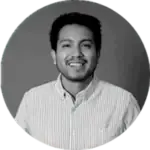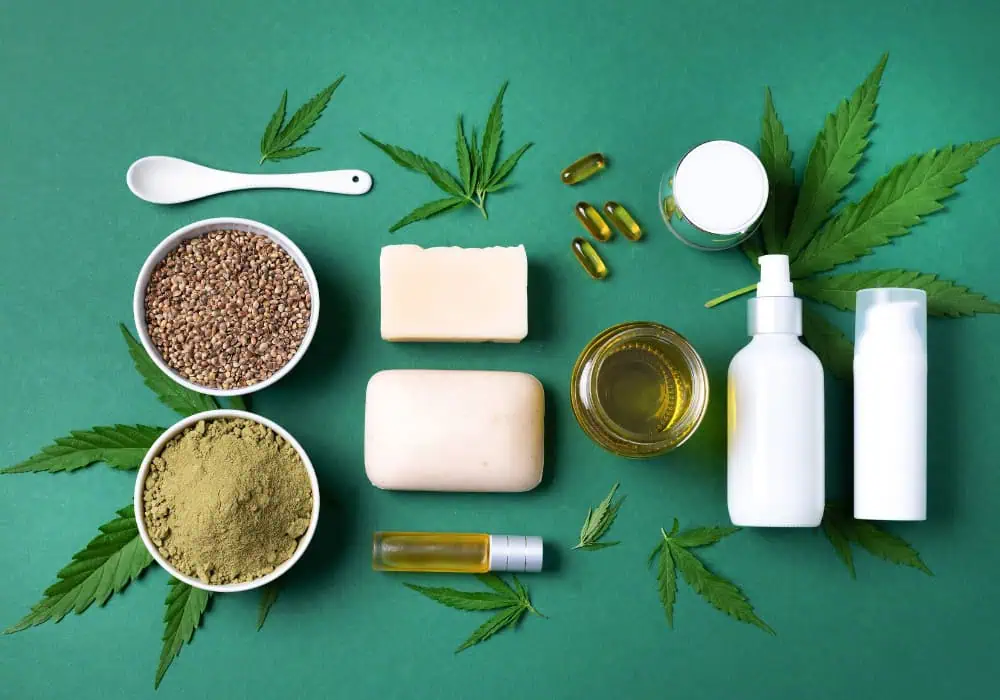TABLE OF CONTENTS
THC gains its fame from being a cannabinoid that contributes to the psychoactive component of cannabis. In other words, THC is what gets a consumer high.
Hemp and CBD flower both have minuscule amounts of THC which is why their legal status is different in the US than THC-containing cannabis.
The beauty in today’s world of dispensaries is that the flower that you purchase has been lab-tested for the most part. Consumers want to see lab results as certain terpenes help them in a variety of medical ways.
THC and CBD levels are usually shown on a label of the cannabis that you purchase.
THC Percentage and Strains
High THC flower can be grown at home, bought at a dispensary, or even delivered depending on your location.
If you want a more balanced high, you may want to look into a THC/CBD hybrid strain. Lower levels of THC might be perfect for a person that has just started their cannabis journey.
Delta 8 THC has also been called a “weed light” and may be an option for someone looking for lower THC levels.
THC and CBD have been shown to benefit consumers when used together which is important to note.
Understanding the differences between Indica and Sativa strain is very important. A person might not enjoy a Sativa as their mind races even with lower levels of THC. The levels of THC along with the strain are two important aspects when choosing the right kind.
THC Percentage Further Explained
The concentration of this psychoactive ingredient in cannabis products is indicated by the THC (tetrahydrocannabinol) percentage. From the 1970s and 1980s, when cannabis usually contained 4–5% THC, to much greater percentages in present strains, THC percentages have increased significantly.
High-THC strains are renowned for their strong effects and are typically defined as having a THC level of 20% or higher. Ghost OG, which has about 29% THC, and other strains with comparable or even higher THC percentages include Bruce Banner, Grease Monkey, 99 Problems, and Chocolate OG are a few examples of high-THC strains.
THC can have a range of physiological impacts. With the exception of those who have established a high tolerance, most people believe that higher THC equals a stronger high.
But the way it is consumed also affects the effects; edibles usually have more intense psychoactive effects than smoking because of variations in the way the body breaks down THC.
THC is expressed as a percentage based on weight. THC levels in cannabis flowers can range from high (over 20%) to medium (10–20%). Cannabis concentrates, on the other hand, contain a lot more THC, usually between 65% and 95%, because of the amount of extracted cannabinoids in them.
The push for more THC has seemingly slowed a bit with some strains hovering around 35 percent. Understanding elevated THC levels and your enjoyment of marijuana go hand in hand. Looking at a THC percentage chart can allow you to truly understand THC and how it impacts you personally.
High THC strains available on the market today:
- Gorilla Glue #4 is notorious for having high levels of THC that leave you glued to your couch. GG4 has been tested at up to 30 percent THC which is around 10 times stronger than marijuana was in the 1970s.
- Amnesia Haze tests at high levels regularly and can make you quite forgetful if the name delivers on its promise. This strain regularly tests between 20 and 25 percent THC.
- Girl Scout Cookies has tested up to 29 percent THC and has a plethora of awards to show for it. The strain originated in 2011 or 2012 with its grower remaining a mystery. This has been a source of hot debate but the one fact that is not debatable is the strain came from San Francisco.
- White Fire OG is one of the prettiest flowers on the market along with testing in up to 29 percent in THC levels. This is a hybrid of The White and Fire OG which is sure to pack a punch in your bowl.
- Chemdog is a phenotype of DogBud that a breeder picked up in the parking lot of a Grateful Dead show. The bud tests between 20 and 24 percent THC which is no surprise with a lineage including a Grateful Dead show.

How THC Levels Have Changed Over The Years
Today’s cannabis is not like that of the 1970s with THC percentages hovering between 5 and 7 percent for high-grade weed strains. Most cannabis had around 3 percent of THC which is seen tenfold in some strains currently.
The THC levels of today are astronomical when compared to just a few decades ago. Marijuana growing has been taken to the next level and will continue to flourish as legal restrictions continue to be lifted.
The 1980s and 1990s didn’t have any real reliable testing when it came to THC levels in marijuana. Everything from the storage of the cannabis to other outside factors made the results of the tests unreliable at best. The tests that were done did show a small increase to around 5 percent when it came to the THC levels of cannabis on average.
The 2000s until the present-day have been the true Golden Age for cannabis THC percentages. Technology has made growing cannabis more convenient than ever.
All a person has to do is check out a valuable resource online or ask an online community about growing, smoking, cooking, or the best dispensaries locally. The average THC content of marijuana in Colorado is around 19 percent which is incredible.
Reasons for the jump in THC levels over the years:
“
There are over 300,000 jobs in the cannabis industry. CTU trained me for one of them!

Makes $24.50 @ THC +
- Hydroponic indoor grows allow for complete control of the growing environment.
- Seed genetics are improving in a variety of ways. The durability of a certain strain might be taken into account when being bred with a sensitive strain.
- Quality soil and nutrients can help increase THC levels and improve things like bud density come harvest time.
- Cannabis growing certification programs like those offered online at CTU puts expert advice at your disposal. The ability to post pictures online to ask others about your grow is also helpful. Being able to detect a mite infestation could potentially save an entire crop. Dealing with certain mites can be as easy as investing in some ladybugs that eat the mites.
- Legal restrictions being lifted in some states led to quite a bit of experimental growing to be done. The federal legalization could lead to even higher THC levels as long as government intervention is minimal.
THC FAQ's
What is THC drug used for?
THC, or delta-9-tetrahydrocannabinol, is a medication used to treat and manage nausea and vomiting brought on by chemotherapy as well as to increase appetite. The primary psychoactive ingredient found in nature, THC, is one of the 113 cannabinoids found in the class of drugs known as cannabinoids.
Does high THC get you higher?
Although ingesting strong strains with THC concentrations above 25% increases the amount of THC in your system, there don't appear to be any further physical or mental health benefits. Users who take cannabis with lower THC levels report experiencing the same euphoric effects.
What are the side effects of pure THC?
Acute psychosis and dissociative states like depersonalization and derealization can occasionally result from cannabis use. Furthermore, it has been shown that the administration of pure THC in clinical settings can cause temporary psychotic symptoms, even in individuals without a familial history of psychosis.

Fred Hernandez
Fred Hernandez is a highly accomplished and versatile writer, boasting an extensive background in the cannabis industry. With an in-depth understanding of various sectors including cultivators, processors, retailers, and brands, Fred's expertise spans across the entire cannabis landscape. As a prominent contributor to CTU, he consistently delivers insightful articles exploring the latest developments, news, and regulations shaping the cannabis industry. Whether it's delving into the intricacies of cannabis products, cannabis strain reviews, or providing comprehensive analyses of cannabis laws, or sharing expert insights on cannabis cultivation techniques, Fred's wealth of knowledge positions him as an invaluable writer and educator for all cannabis-related subjects.












 Jeff was involved in an accident where he endured a traumatic brain injury. He had a week-long stay in ICU where brain surgeons
Jeff was involved in an accident where he endured a traumatic brain injury. He had a week-long stay in ICU where brain surgeons  100% risk free money back guarantee within 48 hours after purchase if student has not completed any of the courses or exams.
100% risk free money back guarantee within 48 hours after purchase if student has not completed any of the courses or exams.